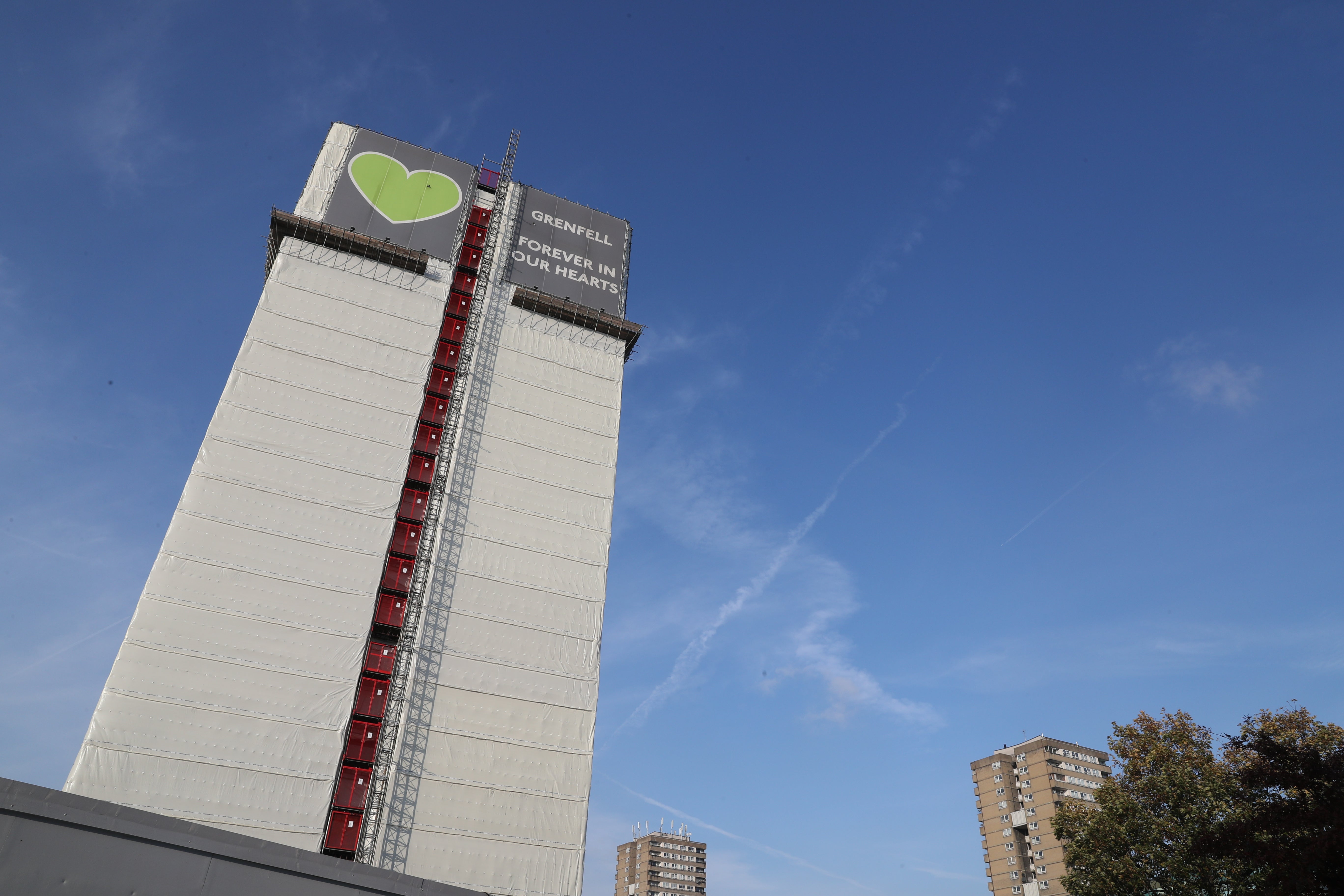Civil servant warned of ‘major fire’ three years before Grenfell, inquiry told
Official alleged to have made the remark in July 2014

A senior civil servant warned “there is going to be a major fire”, as he left a cladding industry meeting three years before Grenfell, an inquiry has heard.
Brian Martin was the official in charge of fire safety building regulations at what was then known as the Ministry of Housing Communities and Local Government.
He is said to have made the comment as he left a July 2014 meeting organised by the Centre for Window and Cladding Technology (CWCT) to discuss concerns over fire safety regulations in the UK’s building industry.
The second phase of the Grenfell inquiry is examining how the block of flats in west London came to be coated in flammable materials that contributed to the spread of flames, which shot up the tower in June 2017, killing 72 people.
In 2019, inquiry chairman Sir Martin Moore-Bick concluded the “principal reason” the flames shot up the building at such speed was the combustible cladding, which acted as a “source of fuel”.
This followed expert witness Jonathan Sakula’s report that Grenfell’s cladding featured a polyethylene (PE) core sandwiched between aluminium composite material (ACM) panels.
David Metcalfe, from the CWCT, gave evidence to the Grenfell Inquiry on Tuesday.

CWCT is an industry-funded not-for-profit organisation that provides guidance and training in facade engineering.
The inquiry heard that it was described in Mr Sakula’s report as “the main technical umbrella organisation for facade technology in the UK”.
In July 2014 a meeting was held to discuss fire safety and building facades, after Chris Macey, from facade engineering consultants Wintech, raised concerns over developers misunderstanding fire regulations with regard to insulation materials.
Minutes from an earlier September 2013 meeting say: “The matter of fire performance, raised by Chris Macey, is to be referred to the technical group. Building control has a huge problem with insulation materials and we should perhaps write a technical update.”
Mr Metcalfe told the inquiry that the July 2014 meeting was convened to “specifically talk about fire”.
By then the CWCT were also concerned about ACM panels, he added.
“At that point there had been fires, particularly in the Middle East, where ACM had been suggested as a cause of fire spread,” he said.
David Cookson, a product manager at Kingspan, also attended the meeting.
In his witness statement to the inquiry Mr Cookson alleged: “One thing that does stand out in my mind from the CWCT meeting is that when Brian Martin left the room, he said something along the lines of ‘there is going to be a major fire’.”
He added that Brian Martin’s comment related to the quality of cavity barriers installed, rather than “simply” ACM.
Cavity barriers are designed to prevent fire spreading between insulation and cladding.
David Metcalfe told the inquiry he did not remember Mr Martin making the fire remark.
“I don’t recall Brian Martin saying that,” he said.
“We had a discussion prior to talking about combustibility of materials. We did discuss fire stopping and rain screen cavity barriers, and there were suggestions that they were not always installed properly.
“So that part of Mr Cookson’s statement is accurate.”
An expert report in 2018 found there were “missing and defective cavity barriers” in the final refurbishment of Grenfell Tower, and that horizontal cavity barriers had been incorrectly installed vertically.
The report by Dr Barbara Lane, commissioned by the inquiry, also found that windows in individual flats had no fire barriers encasing them, and these openings were surrounded by combustible material.
“The assembly – taken together with the insulation material on the existing external wall, the missing and defective cavity barriers – became part of a successful combustion process,” she wrote.
Bookmark popover
Removed from bookmarks